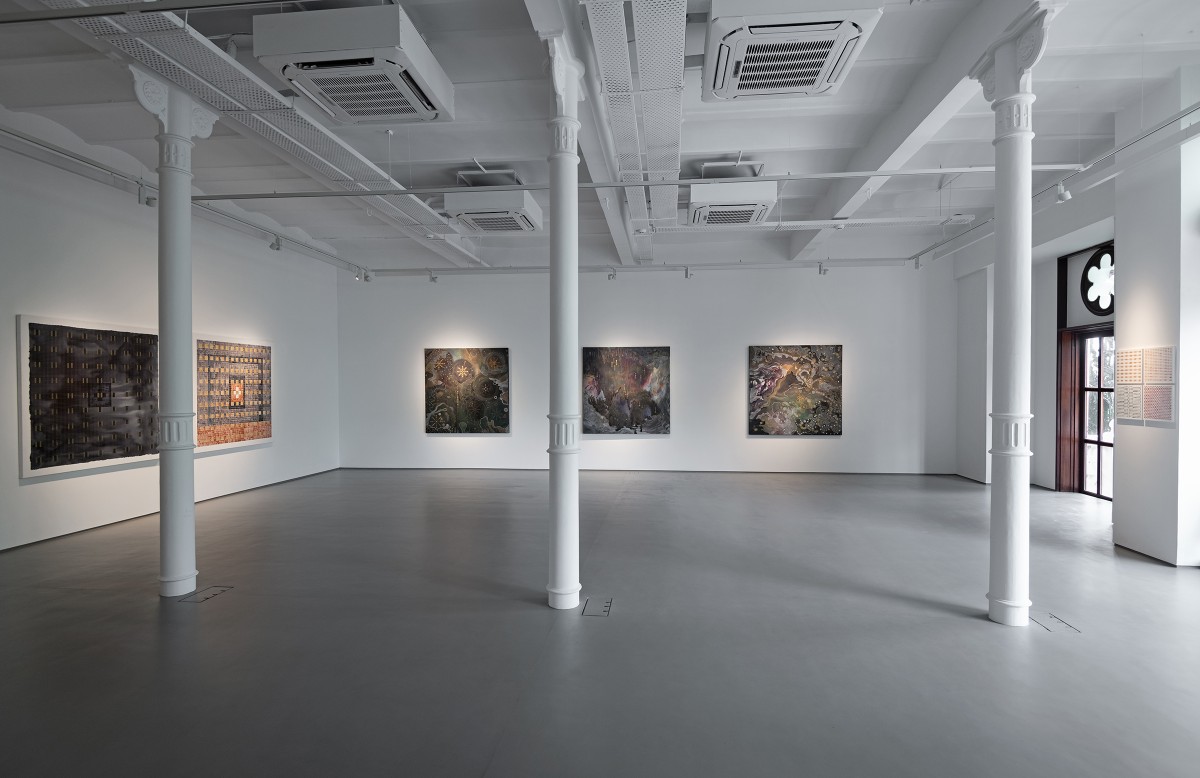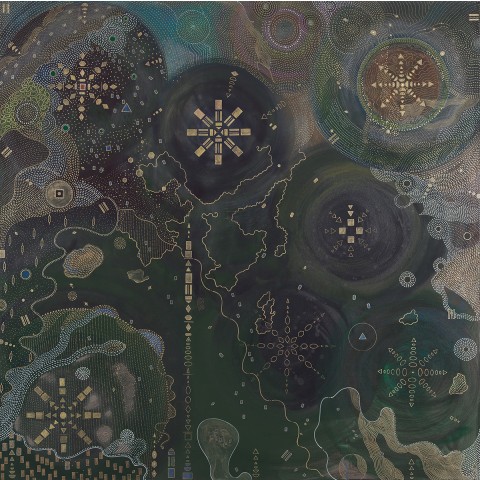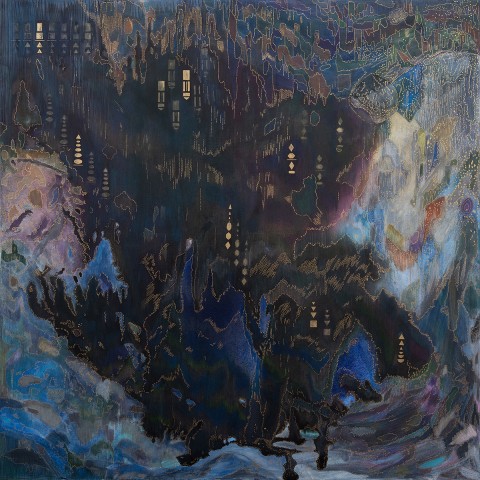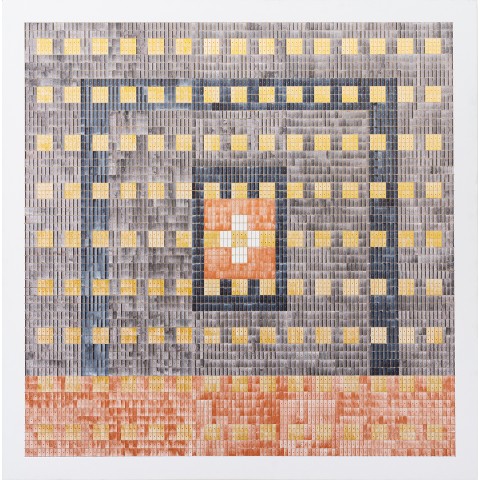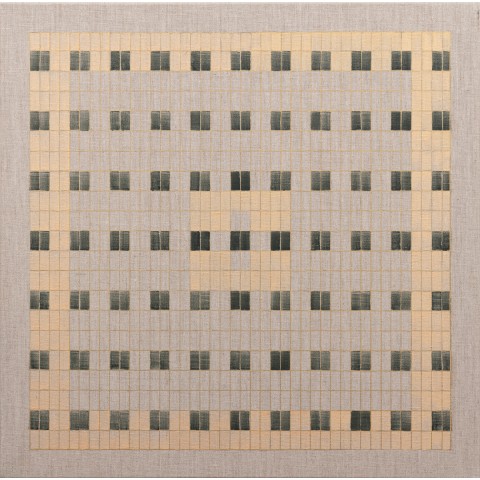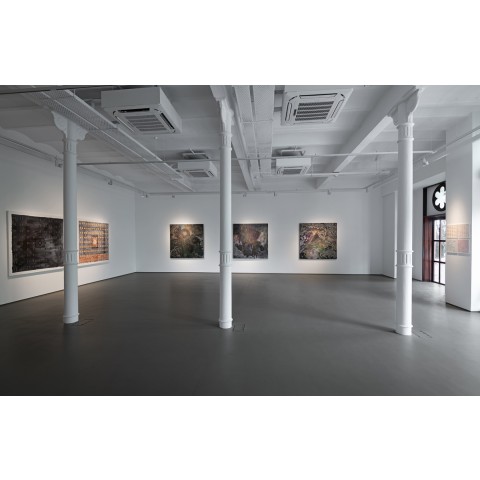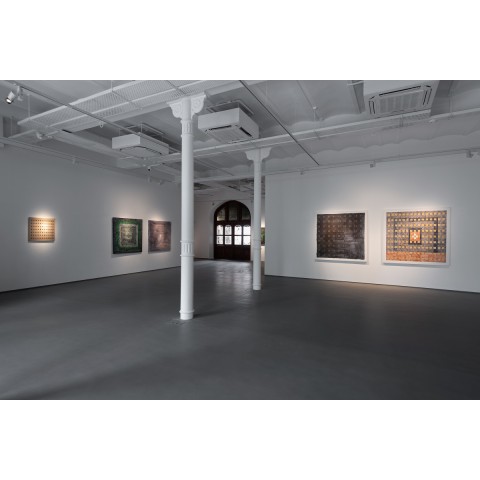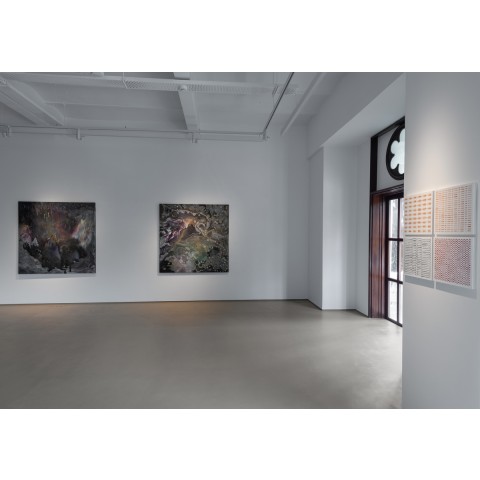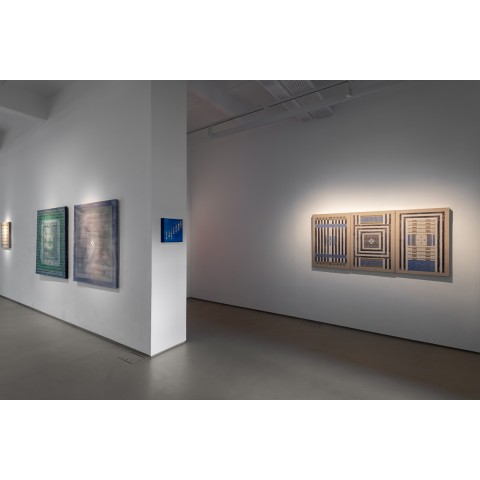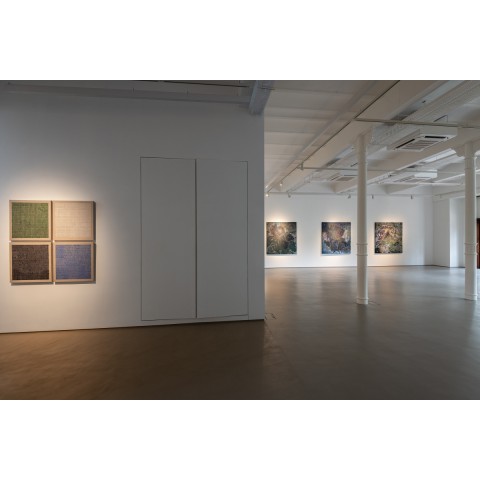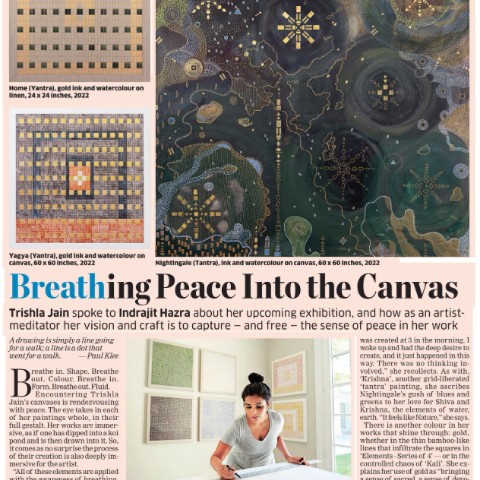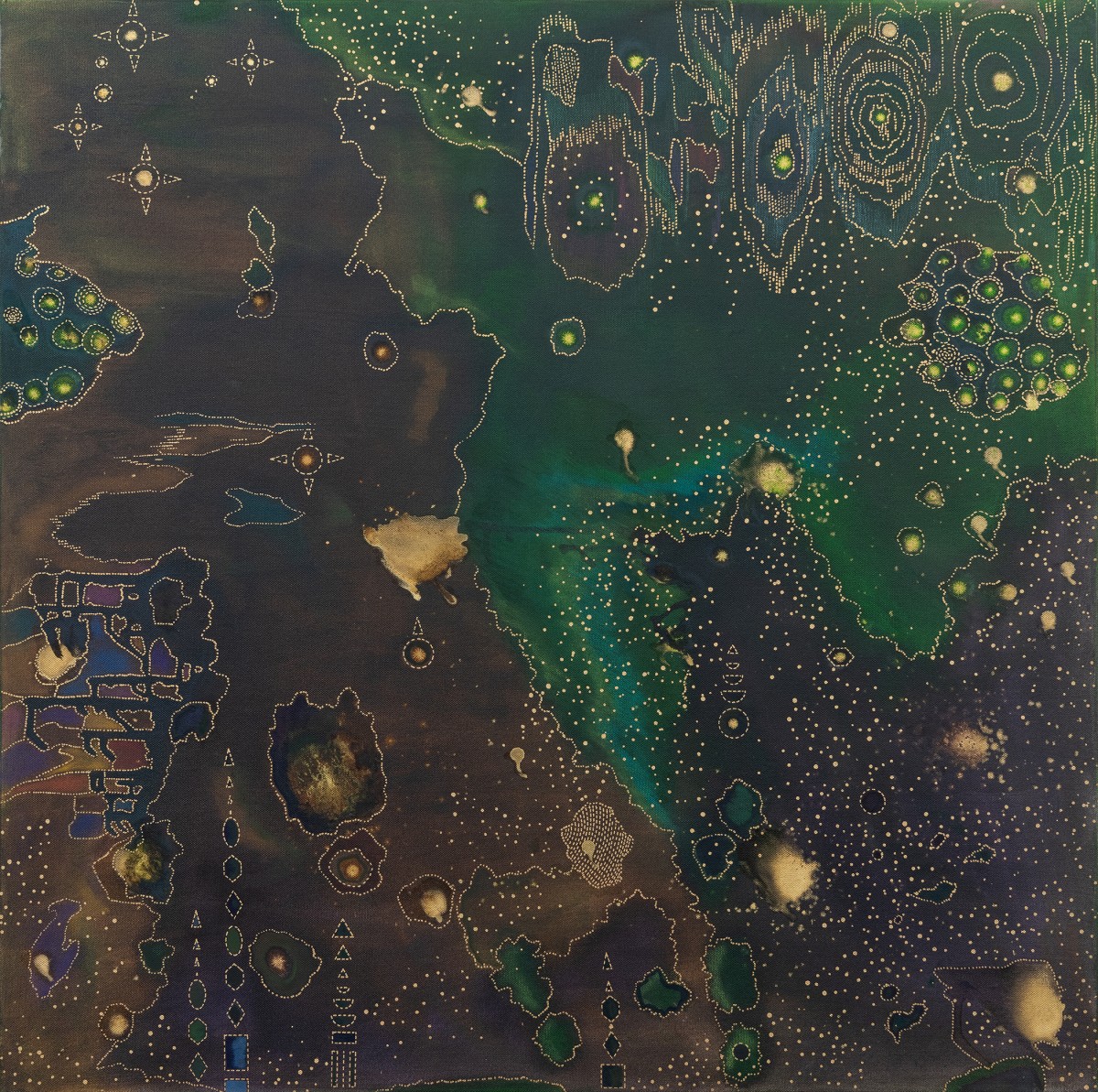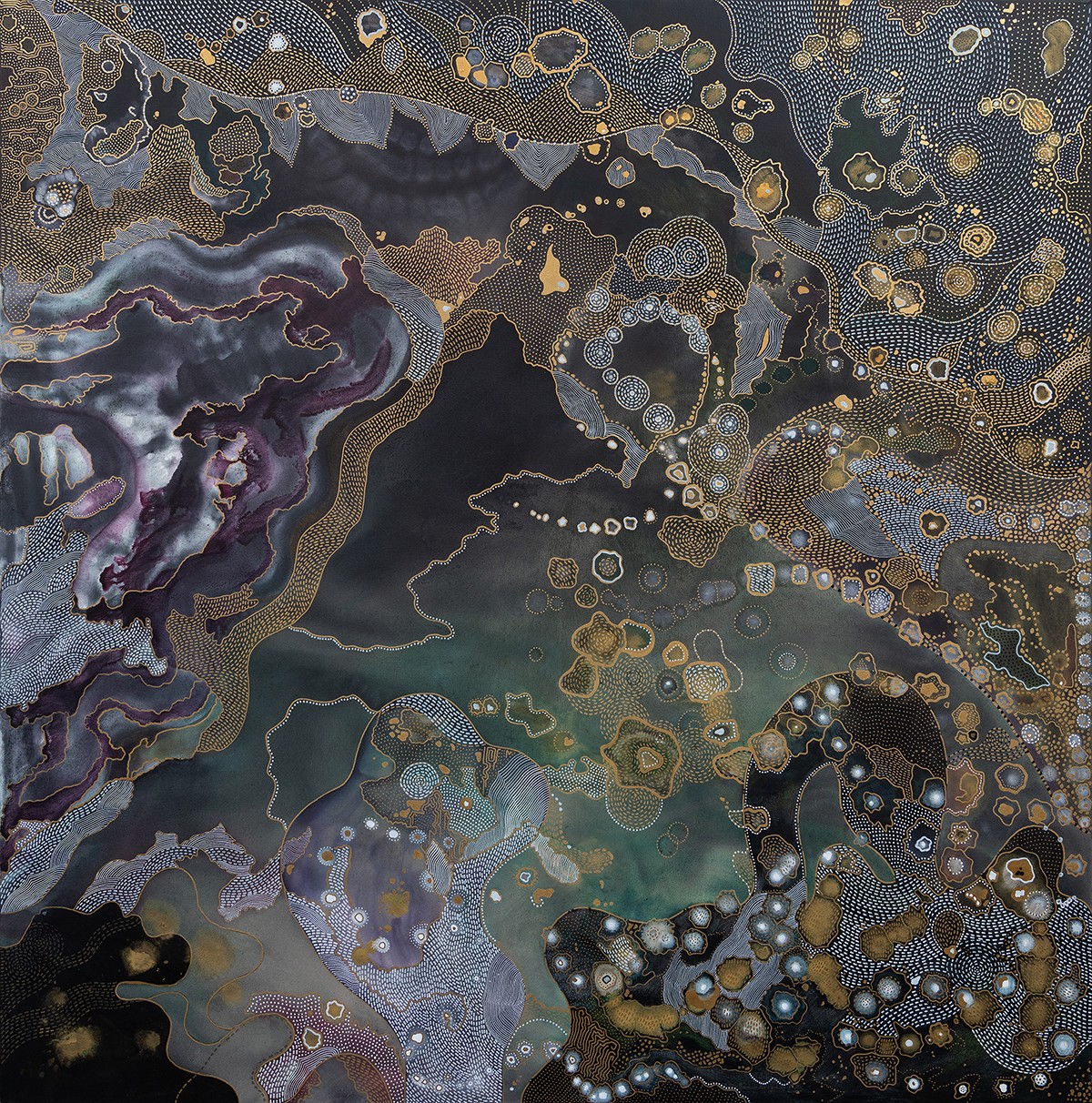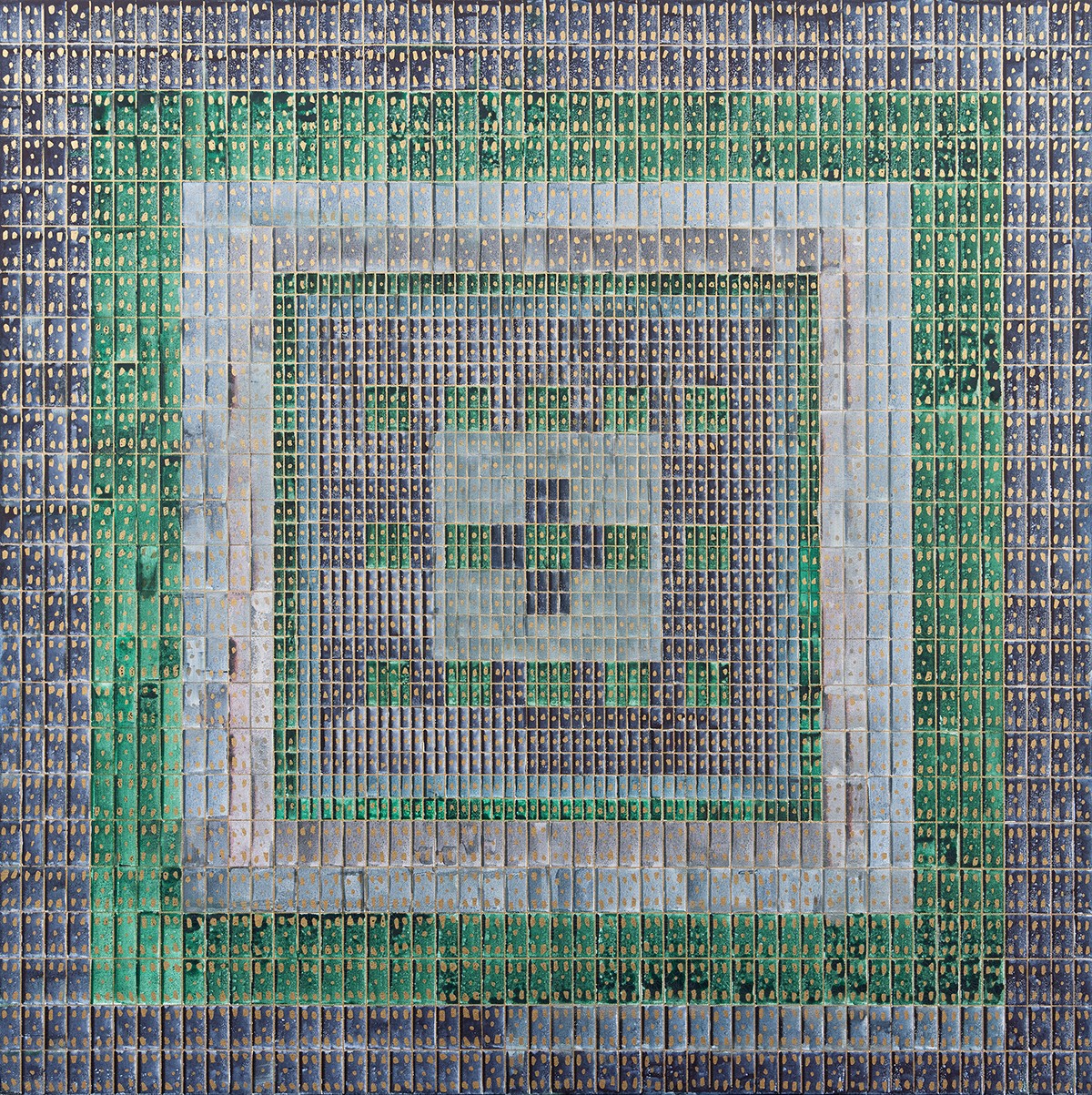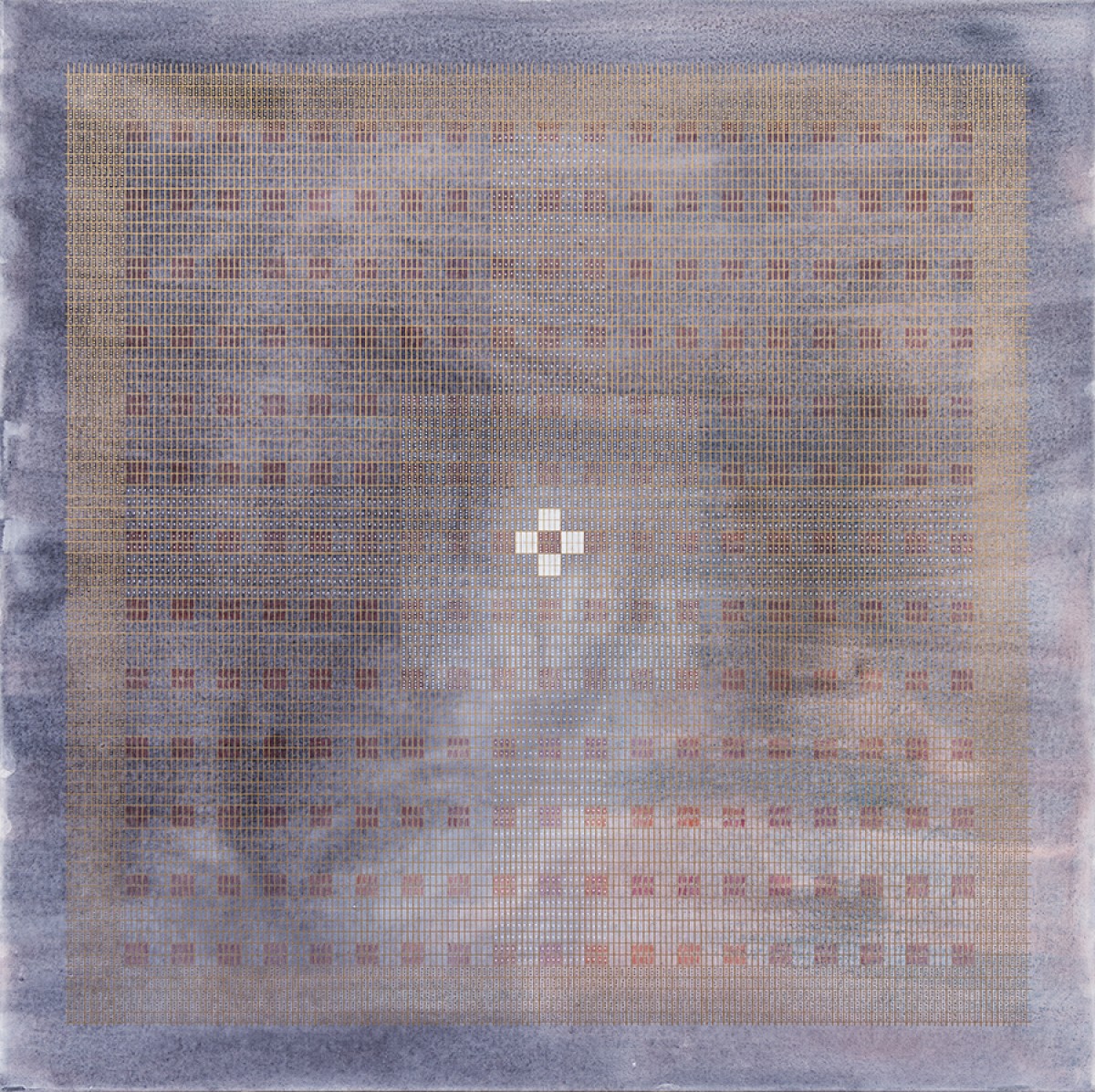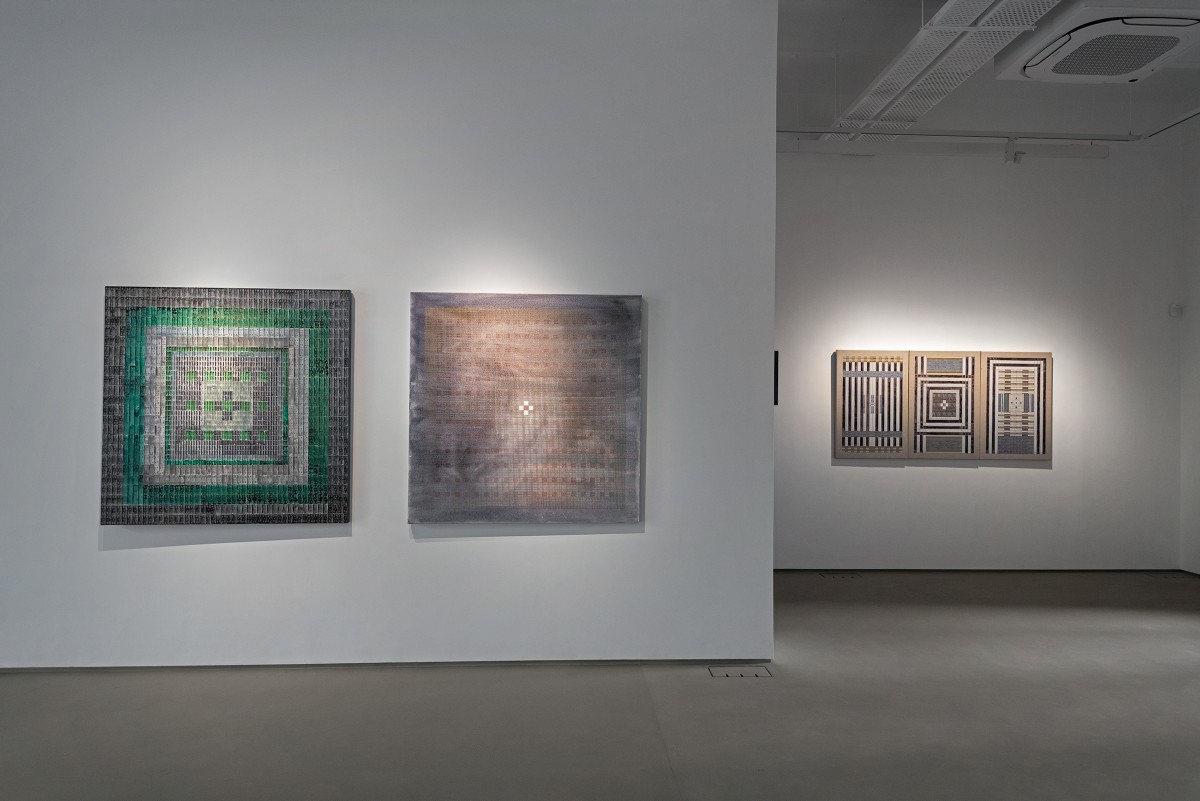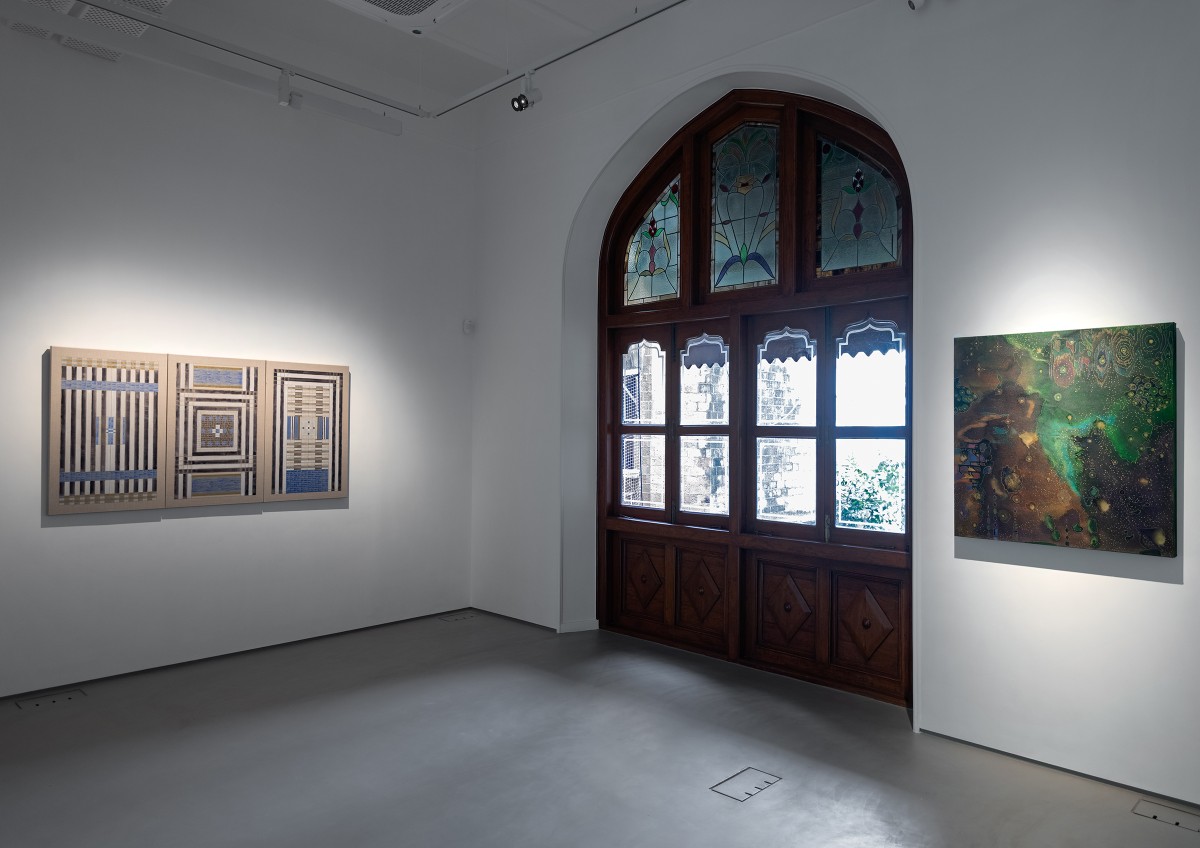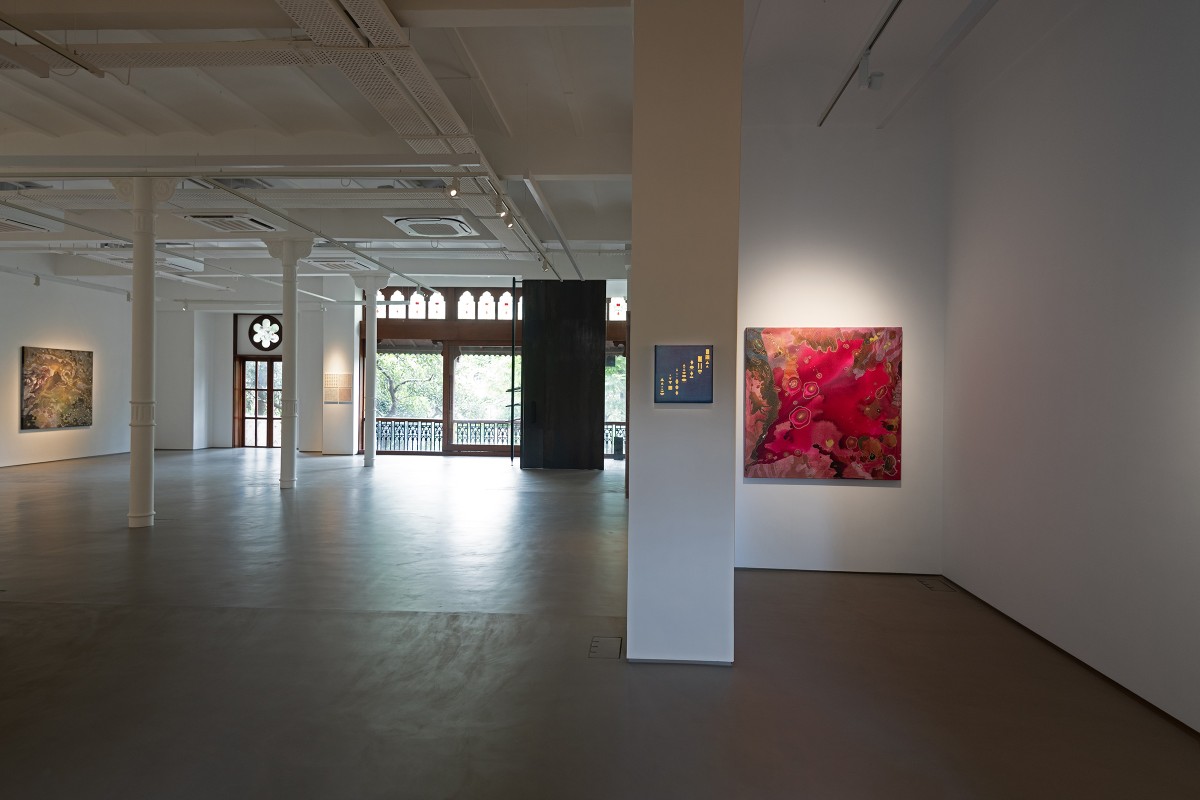August 10 - September 18 , 2023
The line moves from a dot to a grid. The grid expands into patterns
of structure that pause, create and slowly disperse into a formlessness that
celebrates control and freedom of the breath, the mind, and the space in
between. All of this takes place in the now, in the present, in the contemporary.
Time moves in the form of constant nowness in Trishla Jain’s work. The two
series, ‘Yantra’ and ‘Tantra’, which expand Jain’s first solo exhibition at
Akara Contemporary, may initially stand starkly apart from each other but, on
slow immersion through time spent with each painting, the dots and dashes
configure themselves differently across canvases to create new compositions.
These configurations resonate with the present, which arises from a mindfulness
associated with discovering the expanse of space between the breath and the
mind that exists within each of us.
A self-taught artist, Jain turned to the canvas at a very young age.
Growing up in a large joint family in India, she spent her childhood learning
about rituals and life cycles from elders in the house. Her yearning to
understand the essence of life, its purpose, and fragility began at the age of
eight, the same time as her first canvas painting. Jain’s early journey with
spirituality led her to read religious scriptures and observe weeks of silence steeped
in meditation. Years of this practice led her to delve into the extreme
directions towards which the human mind oscillates. Fascinated by the mind’s
possibility to be completely distracted, gathered, dissatisfied, scattered,
centred, or contented, the artist in Jain set out to explore this on canvas.
She describes painting and meditation as two dancers who have been together in
her life since a very young age.
Conversant with
painting and its form, Jain turned away from formal training at art school and
instead chose to study English Literature and Anthropology while continuing to
work through the medium of paint, developing unique methods. Her early conversations with canvas sought joy, peace, and
other emotions that were more a portrayal of an outside desire rather than a
reflection of herself. Over time, as her spirituality grew, she retreated into
a more forgiving way of painting that involved surrender, mindfulness, and
acceptance. As a professional artist now, Jain also considers the act of
painting a form of meditation. In her studio in Palo Alto, she seamlessly
transitions and alternates between seated meditation (stillness) and active
meditation (painting). Greatly influenced by the minimalism in the American
abstract artist, Agnes Martin’s paintings, Jain works towards arriving at the
essence rather than the figure of what she wants to depict. Through a mindfulness
of breathing with relation to time and space her work starts to become less, and
hence begins to grow.
The mind, breath,
and space are three important anchors to understanding and experiencing Jain’s
work. The state of samadhi, the human mind’s experience of undisturbed
peace, structured over five stages acts as a key entry point into her paintings.
Vitakka (initial application of the awareness of breath) translates into
horizontal lines, Vicara (sustained application of the awareness of
breath) becomes vertical lines, Vitakka-vicara or piti
(spontaneous arising of rapture and joy) lies at the intersection of lines, Sukha
(easeful contentment) rests on the dots, and Ekaggata (gathered and
unified mind) is a unison of all the above elements to complete and expand
Jain’s paintings. By incorporating a painted attribution of choreographed dots
and lines, the artist maintains her core practice while also opening her work
to viewers receptive to an interplay of time, control, and its loss.
‘Yantra’ (2020 – ongoing) and ‘Tantra’ (2021 – ongoing), Jain’s most
recent series of paintings, resemble dualities and opposing parts that exist
within all of us. She refers to them as ‘yin and yang, the male and female’,
which allow her to bring herself to the canvas, not in fragments but as a
whole. Though ‘Yantra’ started a year before ‘Tantra’, today the artist works
parallelly on canvases from both series in her studio. On closer observation,
viewers will notice extremely structured elements such as the grid and patterns
from ‘Yantra’ in the ‘Tantra’ series and vice versa. While ‘Yantra’ deals with
a systematic progression of the focused, logical, and structured mind that
helps understand Jain’s layers of entering the state of samadhi;
‘Tantra’ takes on the same mind in its unleashed, challenged, and boundless
form, flowing free. Yet, the breath returns to centre both series of paintings.
Every line, dot
and grid in ‘Yantra’ is representative of the inhalation and exhalation of the
artist’s breath. The mindfulness of breathing that presents itself with a
beginning and an end in ‘Yantra’ resembles the concentrated form of the mind
where everything is in order to appear with clarity. The centre is clearly
determined within the structure until, with a slow release, the breath is let
go in ‘Tantra’. On losing sight of the constructed geometric order that
contains measured understanding, it is first chaos that takes over the mind.
However, the moment acceptance reigns over the abstraction of form, freedom is
instantly harnessed with complete surrender. By adjusting to the openness of
‘Tantra’ and observing it with time, the breath gradually returns to point out
symmetry and order even in its chaos. The tiny dashes of brushstrokes are
measured lines of breath and every now and then one can spot a constellation
forming only to disperse back into the flow of another order.
At a time when everything in our world seems driven and controlled
by technology, Jain’s works invoke a sense of surrender grounded in trust that
comes with letting go of control to accept freedom. There is sustained
mindfulness in this achievement from observing oneself through the breath and
mind in the present moment, in the ‘Nowness in Time’. With this alignment of
the mind and breath, there is a very conscious space that arises within the body
of work and the human body. For a form to be defined it requires space. It is
only when there is distance that one begins to observe patterns, grids, and
structures. On coming too close, the detail takes over but then pushes the
viewer back to create a space that allows one to be absorbed into the
painting’s entirety. It is in this act of emptying that we are nourished to the
brim with a contemplative energy and light which brings with it contentment, peace
and harmony. In ‘Tantra’ particularly, the mediums of gold oil paint with
watercolour repel each other in dramatic ways to create patterns of space on
the canvas that connect back to a positive-negative force akin to two magnets
that work to intensely push away only to align with each other by embracing
opposites and differences. By accepting this space there is suddenly an
articulation of a self-reflective silence that comes to rest and seeks to stay
in a cultivated reception of the truth, of the present, of the miraculous now.
This is not a silence of fear, but rather a conquering silence of peace, of acceptance,
and of letting go that allows for a flow of thought and mindfulness in a moment
that is beyond the past and short of the future; it is the moment of now that
centres the viewer back into a universal present in the nowness of time.
Veeranganakumari
Solanki
